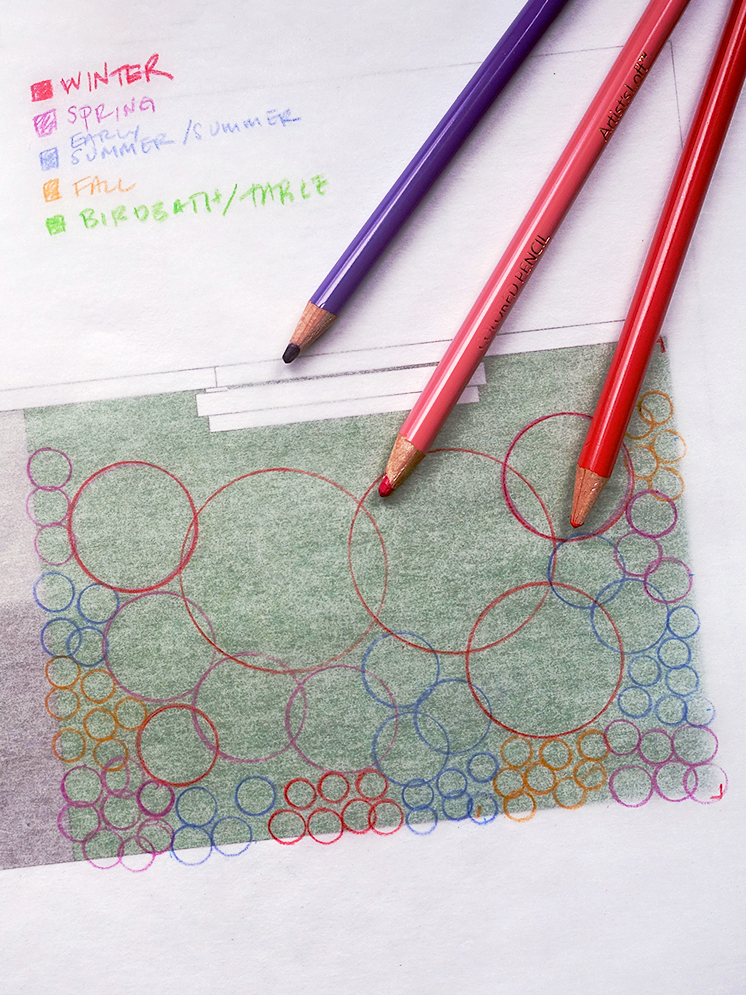It’s hammer time: Follow @reno_notebook for easy rental updates, clever DIYs, and tips to nail your next project.
Yes, You Can Grow a Garden in the Shade—Here’s How I’m Planning Mine
From choosing the site to dreaming up the design.
Updated Oct 11, 2018 1:47 PM
We may earn revenue from the products available on this page and participate in affiliate programs.
The French writer Stendhal said that “beauty is the promise of happiness,” and garden designer Russell Page wrote that gardens are “the embodiment of a hope.” Now more than ever, we must try to cultivate our own sense of hope and happiness. We must all plant seeds. As a designer who spends his days creating homes and outdoor spaces for other people, my piece of joy is my own future shade garden, which sits at the front of my house underneath 100-year-old spruces. My plan of action:
The Site
The ideal spot for a shade garden is typically easily identified by the fact that nothing or very little grows there, except for maybe one or two aggressive species. You’re looking for a location that receives four hours of sunlight max, much of which is diluted by branches overhead. After the usual plot measurements and soil research required in all garden design (do you have sand, silt, clay?), it’s crucial to take the time to understand just what kind of shade you have. Is it bright shade on the edge of a southern-facing forest or dappled partial shade like mine? Knowing this will help inform your plant choices; there’s a big difference in the levels of shade different plants can tolerate. The answer can be determined simply by careful observation over your beverage of choice.
The Plants
There are an infinite number of resources available online, but I find the most accurate and useful to be regional botanic gardens’ websites (though you can also give them a call or visit in person). When choosing plants, keep in mind that shade gardens usually aren’t going to be as floriferous (i.e. full of flowers) as regular gardens, so focus your research mostly on foliage combinations. Compile a list of species that appeal to you, making sure to note the season when each plant blooms and its mature width and height, to help you figure out your planting design (more on that later) and how many plants you’ll need to bring it to life. As always, be aware of your USDA zone, moisture, and light requirements—a zone 5 shady area with bog-like conditions in Chicago isn’t the best fit for a strelitzia that hails from rocky South Africa, though that same plant would be right at home in Los Angeles.
On the subject of exotic species, know your plants’ origins and any positive or negative impacts they could have on your backyard’s natural ecosystem. No one should be shamed for bringing in a well-behaved outlier, particularly if it will thrive where others won’t, but keep in mind that you may want to offset it by incorporating a few more species that will be beneficial to your local wildlife. In my case, I’m mixing traditional yew and boxwood with native plants like Kalmia latifolia and Eurybia divaricata, then throwing in a weirdo or two like Japanese toad lily. Gardens, like parties, thrive when there’s a good mix of wallflowers and wild-childs.
The Design
Don’t be afraid to take a narrative approach when landing on a style for your garden—my Italianate home is nearly 200 years old and was vacant for a while, so I’m designing a garden that tells the story of something formal that has decayed over time. A space that leaves room for the idiosyncratic is more likely to be remembered.
I start my design not by plugging in plants, but by mapping out their seasonal zones on tracing paper over the site plan; they will determine how you experience the garden throughout the year. Winter comes first—this is when your garden will be the most bare, so it’s important to ground it with a good skeleton that will be pleasing to look at from both inside and out. Flowers are a welcome sight in spring, so carve out a spot for early blooming ones there. Summer dinner parties are way better when it’s hard to tell if you’re intoxicated from the wine or the heady scent of nearby blossoms, so make sure to plant something fragrant in borders adjacent to dining areas.
Once these zones are planned out, I begin layering in specific species from my list on another layer of tracing paper, considering height, form and color combinations as I go. For me, the most dynamic spaces are a study in contrasts, so I always try to break up repetitive spherical shapes with a strong vertical statement, shake up the use of polite pastels by incorporating flowers with a pitch-black or clownish hue, and experiment with drastic changes in scale. Typically this takes me several passes before I arrive at a solid end result that has multi-season interest, is cohesive without being redundant, and has a few unexpected touches. If you have the luxury of putting your plan in a drawer for a week to let it simmer, I suggest you do.
While mine sat in its respective drawer for a week in late March, I commenced phase one of my annual garden cleanup. The days were dreary and gray, so I brought in little dried bits of sedum and goldenrod to be enjoyed indoors. Attempting to assemble their brittle bodies into meaningful arrangements, I eventually just let them do their own thing. Not much makes sense right now, but my hope is that it will come spring.






